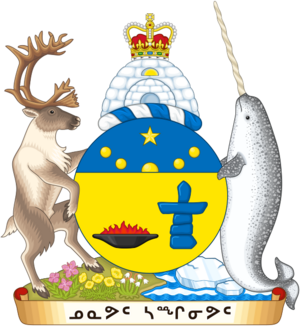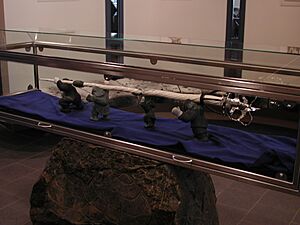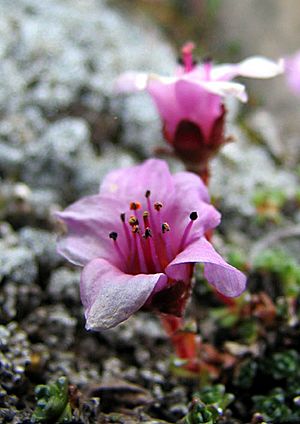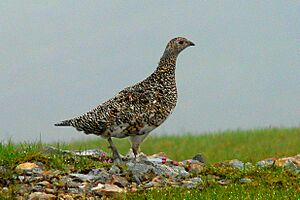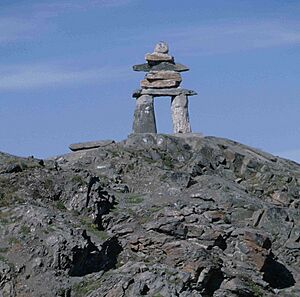Symbols of Nunavut facts for kids
Nunavut is one of Canada's three northern territories. Like a country or a province, Nunavut has its own special symbols that represent its unique culture, history, and land. These symbols help tell the story of Nunavut and its people, especially the Inuit who have lived there for thousands of years.
Contents
The Coat of Arms is like a special badge for Nunavut. It was officially chosen on March 31, 1999, just before Nunavut became a territory. This important symbol was designed by an artist named Andrew Qappik.
The Coat of Arms shows many things that are important to Nunavut:
- It has symbols for the rich land, the sea, and the sky.
- It includes animals like the caribou and the narwhal, which are important to the people of Nunavut.
- It also features an Inuksuk, which is a stone landmark made by the Inuit people.
Nunavut's motto is Nunavut Sannginivut. In the Inuit language of Inuktitut, this means "Nunavut, our strength." This motto was given to Nunavut at the same time as the Coat of Arms, showing the strength and spirit of the territory and its people.
The flag of Nunavut was chosen in April 1999. It was also designed by Andrew Qappik, the same artist who created the Coat of Arms. The flag has special colors that show the geography of Nunavut. It also features the North Star, which is very important for navigation in the Arctic. The North Star has guided the Inuit people for centuries.
The Mace of Nunavut is a special staff used in the Legislative Assembly. This is where the elected leaders of Nunavut meet to make laws. The Mace is a symbol of the Assembly's authority and power to make decisions for the territory. It is carried into the meeting room by an official called the Sergeant-at-Arms before every session. The Mace was adopted on March 30, 1999.
The official flower of Nunavut is the Purple Saxifrage (Saxifraga oppositifolia). This beautiful plant is one of the first flowers to bloom in the Arctic spring, even when there is still snow on the ground. Its bright purple color brings life to the landscape after the long, cold winter.
The official bird of Nunavut is the Rock Ptarmigan (Lagopus mutus). In Inuktitut, it is called Aqilgiq (ᐊᕐᑭᒡᒋᖅ ᐊᑕᔪᓕᒃ). This bird is special because it lives in Nunavut all year round, even during the harsh winters. The Rock Ptarmigan changes its feather color with the seasons, from brown in summer to white in winter, helping it blend in with its surroundings.
The official animal of Nunavut is the Canadian Inuit Dog (Canis Familiaris Borealis). In Inuktitut, this dog is called Qimmiq (ᕿᒻᒥᖅ). These strong and loyal dogs have lived in the Arctic with the Inuit people for at least 4,000 years. They were traditionally used for hunting, pulling sleds, and helping people travel across the vast snowy landscapes.
The Inuksuk Symbol
An Inuksuk (also called Inukhuk or Inukshuk in Inuktitut, ᐃᓄᒃᓱᒃ) is a traditional stone landmark built by the Inuit people. These stone figures are very important in the Arctic. They were used for many purposes, such as:
- Marking good hunting or fishing spots.
- Guiding travelers across the land.
- Showing where food caches were hidden.
- Serving as memorials.
The Inuksuk is a powerful symbol of the Inuit culture and their connection to the land.
Nunavut's license plates are rectangular, like most North American plates. They feature the name "Nunavut" in both English and Inuktitut (ᓄᓇᕗᑦ).


